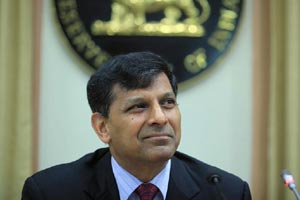The Reserve Bank of India (RBI) on Tuesday kept the key rates unchanged at 6.75 per cent in its monetary policy review on Tuesday.
Below are the top 5 reasons why RBI didn’t go for a rate cut this time
1. The central bank is eyeing the US Federal Reserve meet that is widely expected to raise US rates in December for the first time in nearly a decade. Although India has outperformed other emerging markets over the past two years, the country is not immune to Fed-related worries.
2. RBI kept its monetary policy steady amid lingering concerns over inflation. Inflation based on the consumer price index rose to 5 per cent in October, from 4.41 per cent in September, mainly on the back of rising food prices. India will comfortably meet its target of keeping annual consumer inflation to 6 percent in January, Rajan is expected to shift focus towards getting it down to around 5 percent by March 2017.
3. The signs of recovery in the GDP, from a growth rate of 7 per cent in the previous quarter ended June 30, follows a series of rate cuts announced by the RBI in recent months and bolstered the case for the central bank to hold onto its rate at its scheduled monetary policy review meeting on Tuesday.
4. Analysts are of the view that the Reserve Bank of India is likely to wait for the Budget announcement before proceeding further.
5. RBI holds repo rate this time because the apex bank has already cut the rate by 125 basis points (bps) during the year. Now the focus is transmission of 125 bps, since banks lending rate has reduced only by an average of 30 bps in the same time.
6. The implementation of the Seventh Pay Commission proposals, and its effect on wages and rents, will also be a factor in the Reserve Bank’s future deliberations, though its direct effect on aggregate demand is likely to be offset by appropriate budgetary tightening as the Government stays on the fiscal consolidation path, RBI said.
7. The Reserve Bank will follow developments on commodity prices, especially food and oil, even while tracking inflationary expectations and external developments, he said.

